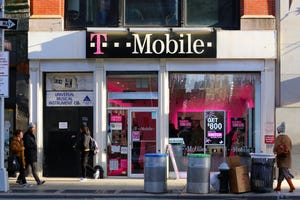Hughes opens data spigot as new broadband satellite enters service
Hughes Network Systems has tapped into its new Jupiter 3 satellite to fuel the launch of faster (and uncapped) satellite broadband speed plans that deliver up to 100 Mbit/s downstream.

Hughes Network Systems, a unit of EchoStar, is speeding up its broadband push as it unleashes new speed tiers delivering up to 100 Mbit/s fueled in part by the company's new high-capacity Jupiter 3 satellite.
Hughes' new tiers emerge about five months after the launch of Jupiter 3 and follow a recent wave of alpha and beta tests, according to Hughes SVP Mark Wymer.
Jupiter 3 packs more than 500 Gbit/s of capacity via Ka-band spectrum, plus support for Q- and V-band spectrum for gateways. It joins a constellation that includes Jupiter I (EchoStar XVII, 120 Gbit/s of capacity) and Jupiter 2 (EchoStar XIX, 200 Gbit/s of capacity).
The addition of Jupiter 3 opens up a new "Elite" package that delivers up to 100 Mbit/s upstream for $89.99 per month, and a "Select" tier of up to 50 Mbit/s down for $74.99 per month.
Hughes also markets a low-latency, hybrid offering called "Fusion" that also delivers up to 100 Mbit/s downstream by meshing satellite and terrestrial mobile connectivity. Fusion sells for $109.99 per month.
Hughes' satellite broadband service is still highly asymmetrical. However, the company is bumping its upstream speeds to 5 Mbit/s from 3 Mbit/s.
On the hardware side, Hughes customers can lease the necessary equipment, including a new router with Wi-Fi 6 called the HG3000W, for $14.99 per month for the satellite-only offering or $19.99 per month for the Fusion version. Customers can also purchase those products for $299.99 (satellite-only) or $449.99 (Fusion). Hughes also leases Wi-Fi mesh nodes for $5 per month and sells them for $99 each.
The dish for the new Jupiter 3-based offerings is similar to Hughes' existing dish but requires a new radio to access the Jupiter 3 signals.
Unlimited data a 'must'
All of Hughes' updated tiers come with up to 200 gigabytes of "priority" data each month delivered in the marketed speed range. After hitting that data threshold, users get access to the best possible speeds available at the time (what Hughes calls "standard" data). But all the tiers are now uncapped.
The focus on unlimited data was considered a "must" to stay competitive and to support ever-increasing data demands, Wymer told Light Reading in an interview.
"We're pulling the band-aid off and going with unlimited plans in this case," he said. "We had to start playing in that environment."
Hughes' competition in the satellite world includes Viasat, which uses geosynchronous satellites, and Starlink, which runs on a broadening array of low-Earth orbit satellites.
The speedier offerings from Hughes are coming together amid a pending merger of spectrum-rich Dish Network and Hughes' parent, EchoStar. Wymer said the transaction could open up new spectrum synergies as Hughes, Dish and Dish Wireless come under the same umbrella.
Driving subscriber acquisition
Hughes also expects the access to fresh capacity on Jupiter 3 to give its subscriber base a jolt. EchoStar shed 165,000 subs globally during the first nine months of 2023, ending Q3 with 1.06 million. At the time, EchoStar blamed the US portion of its subscriber decline on "current capacity limitations" along with competitive pressures.
Jupiter 3 might also clear the way for Hughes to put additional focus on enterprise markets, including in-flight connectivity. Speaking on the company's Q3 call, EchoStar COO Paul Gaske said a "major portion of our plan anticipated aeronautical services, as well as other enterprise services."
Jupiter 3's capacity, when paired with the Jupiter 1 and 2 birds, will also come in handy to help serve hub area cities, according to Gaske.
Exploring BEAD potential
Hughes expects to maintain its focus on lower-density rural areas that are underserved or unserved by wired broadband. The new 50 Mbit/s and 100 Mbit/s plans put Hughes in better competitive position to target the edges of markets that have a dominant cable or fiber provider, Wymer said.
Hughes is monitoring the $42.45 billion Broadband Equity, Access, and Deployment (BEAD) program, he added.
"We're very active and evaluating [opportunities] with a number of states" that might be game for multi-technology approaches, Wymer said.
Hughes recognizes that BEAD funding is required for wireline broadband providers to reach lower density areas but questions whether the densities will be high enough to make a portion of those deployments profitable over the long term, he added.
Hughes' approach, as it relates to hardware and network costs, can be "extremely competitive" and less expensive in some areas that are exploring fiber buildout, Wymer said.
Editor's note: This story was corrected to note that EchoStar lost 165,000 broadband subs globally during the first nine months of 2023 rather than in Q3 2023 alone.
About the Author(s)
You May Also Like












